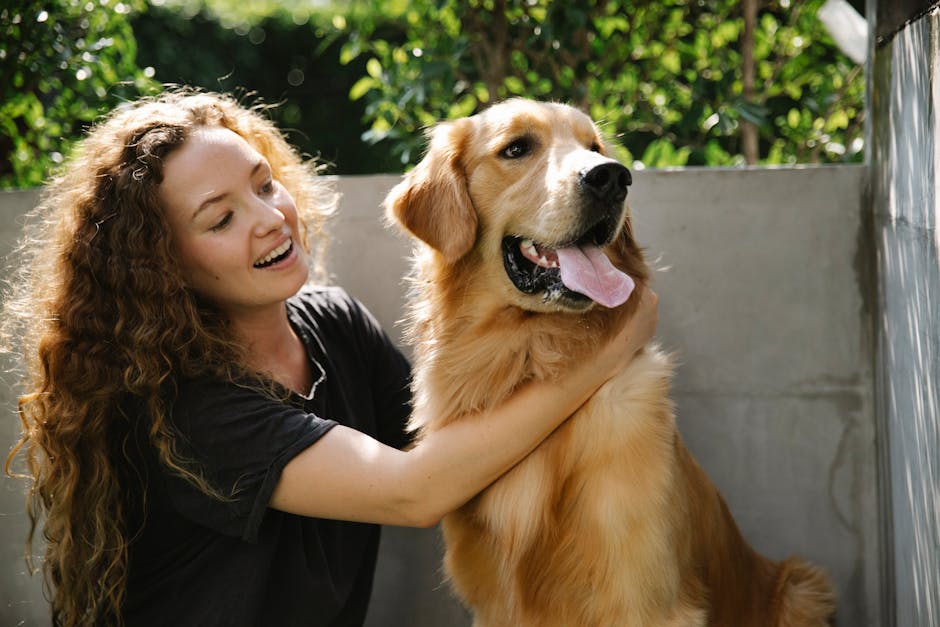 Photo from Pexels
Photo from Pexels
Originally Posted On: https://freedomfencect-ny.com/training-your-pet-to-use-an-underground-electric-fence/
Training Your Pet to Use an Underground Electric Fence
An underground electronic fence, also known as an invisible fence, is a humane way to keep your pet safely contained within your property boundaries. This system relies on a buried wire that emits a harmless radio signal, which is detected by a receiver collar worn by your pet.
Despite the self-correcting nature of this system, proper training will allow your pet to understand and respect the invisible boundary. The key is gradual exposure to teach them where the boundary is and how to respond correctly when they approach it.
In this blog, the pet fencing experts at Freedom Fence provide tips and key considerations for boundary training, including mistakes to avoid and long-term strategies for success.
Built-in Training: How Electric Pet Fences Reinforce Boundaries
While human intervention is an important aspect of teaching your dog the boundary in your yard, these fences are designed to be self-correcting. The immediate feedback from the collar teaches your pet the consequences of crossing the invisible line, reinforcing the desired behavior.
Your pet will learn from their experiences without the need for your constant attention. As they continue to explore the boundaries, the static correction serves as a gentle reminder to stay within the yard, keeping them safely on your property.
How Does a Pet Containment System Use Classical Conditioning?
Classical conditioning is a learning process in which associations between stimuli are formed. A common example is your dog’s excitement at the sound of a leash or treat bag.
In this case, the sound (originally neutral) is consistently paired with the pleasurable experience of a walk or tasty treat (unconditioned stimulus).
Over time, the sound alone (conditioned stimulus) triggers happy tail wags and excited barking (conditioned response) in anticipation of the enjoyable activity or treat.
Here’s how a pet containment system uses classical conditioning:
- Warning tone (neutral) precedes the correction (unconditioned stimulus), causing mild discomfort.
- After repeated pairings, the warning tone alone (conditioned stimulus) triggers your dog to avoid the boundary (conditioned response).
- Your dog associates the tone with the unpleasant correction, helping them learn the boundary without constant corrections.
Introducing Your Pet to an Invisible Fence
To set your pet up for success with your new fencing system, it’s best to acclimate them gradually. You don’t want their first encounter with the fence to be a complete surprise.
Here’s how your pet will be introduced to the boundary:
- Flags up: Flags are set up around the perimeter of the boundary to serve as a visual cue marking the safe zone.
- Leashed exploration: With your pet on a leash, walk them around the flagged area, praising and rewarding them with treats for staying within the safe zone. This creates a positive association with the designated area.
- Warning zone focus: Near the boundary flags, keep your dog leashed and walk them closer until the warning tone sounds. Before any correction, gently guide them back inside the safe zone and reward your dog with praise and their favorite treats.
- Low-level correction: Gradually repeat the previous step, allowing your dog to approach the boundary until they receive a low-level correction after the warning tone.
Tips for Successful Dog Fence Training Sessions
Consistency and patience are key to successfully training your pet to use an underground electric fence.
To ensure productive and effective training sessions, follow these tips:
- Keep it short: Dogs have short attention spans. Aim for training sessions of around 10-15 minutes to keep your dog focused and engaged.
- Reward: Reward your dog with treats and praise for good behavior within the safe zone and for heeding the warning sign. This builds positive associations within the boundaries.
- Make it fun: Incorporate playtime activities like fetch or frisbee within the safe zone to keep training enjoyable and stimulating for your dog.
- Be consistent: Learning takes time. Repeat exercises consistently, and be patient with your dog’s progress.
- End on a positive note: Always finish training sessions with a successful outcome for your dog. This leaves them (and you) feeling good and wanting more.
Mistakes to Avoid When Training Your Pet With an In-Ground Fence
Setting your dog up for success when training them to respect the designated boundary requires you to commit to short, essential training exercises that gradually establish the association.
Here are a few mistakes to avoid during training:
- Rushing the process: Don’t expect your dog to understand the boundaries overnight. Gradual exposure with leash training and positive reinforcement is key to safe and successful training.
- High-correction levels: Start with the lowest correction level and only increase it when necessary based on training progression and needs.
- Ignoring distractions: Train in a controlled environment initially, but gradually introduce distractions like toys or people outside the fence during training sessions.
- Improper collar fit: Your dog will be fitted with a collar when an installer sets up your fence. Avoid unnecessary adjustments, as a loose collar can lead to ineffective corrections.
Introducing Distractions for Long-Term Training Success
Your dog is attracted to all kinds of things—other dogs, strange sounds or smells, people—and they can play a vital role in simulating real-world scenarios during fence boundary training. They help your dog understand that boundaries aren’t just relevant in calm environments.
You can start by introducing mild distractions like placing toys just outside the safe zone. If your dog ignores them, gradually increase the intensity. Later sessions can involve people walking up to the fence or placing fetch within the safe zone to throw in some movements.
With the aid of physical and verbal correction, as well as positive reinforcement when necessary, you can build your dog’s confidence and ability to respect the boundaries even when temptations are present.
Explore Our Electric Pet Fencing Solutions
Freedom Fence’s electric pet fencing solutions keep your pet safe and secure in your yard. We offer expert guidance and custom training to keep your pet within your chosen boundary so you aren’t worrying about them wandering off.
Contact us today at (203) 948-5367 to learn more about our training methods or to schedule a consultation.
